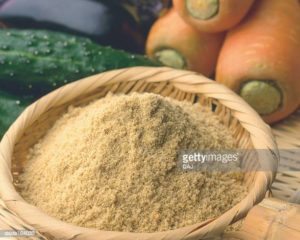“We conclude that MGN-3 and curcumin synergize in the induction of U266 cell apoptosis. This data may establish the foundation for in vivo studies that could have therapeutic implications…”
Diagnoses of MGUS or SMM are not quite as difficult as being told “you have cancer.” But hearing this diagnosis of pre-myeloma can cause similar emotions, similar feelings. After all, a diagnosis of either MGUS or SMM increases your risk of an incurable blood cancer called multiple myeloma.
Living with MGUS or SMM isn’t necessarily a problem. The problem is multiple myeloma.
The challenge then, is to reduce your risk of MM. And to reduce the risk without increasing the risk of some other health problem. I am referring to clinical trials to test if chemotherapy should be given to smoldering multiple myeloma patients.
So far, studies document that yes, chemo does slow progression to SMM, however chemo also causes side effects, lowers the patient’s quality-of-life but does NOT increase overall survival aka OS.
According to the studies linked below,
- curcumin kills monoclonal proteins (kills MM)
- MGN-3 kills monoclonal proteins (kills MM)
- MGN-3 supports the immune system weakened my MGUS
- Curcumin and MGN-3 enhance the killing of monoclonal proteins

I see MGN-3 and curcumin as a kind of non-toxic, one-two punch to MM cells. If you’ve been diagnosed with pre-MM (SBP. MGUS or SMM) consider undergoing evidence-based but non-toxic therapies shown to reduce the risk of a full MM diagnosis.

I have been supplementing with various Life Extension products for years. I’ve been taking curcumin for the longest but I take other LEF supplements as well from Vitamin D3, Omega-3 fatty acids, to CoQ10, and many others. LEF is a brand that is not the cheapest, not the most expensive and has always been well-reviewed by Consumerlab.com.
David Emerson
- MM Survivor
- MM Cancer Coach
- Director PeopleBeatingCancer
Recommended Reading:
“The results of this study confirm our hypothesis that an abnormal FLC ratio is an important risk factor for progression and is independent of the size and type of the serum M protein, 2 known prognostic factors.5The relative risk of progression is related to the extent to which the ratio is abnormal. We also show that the size and type of the M protein and the serum FLC ratio can be combined to yield a powerful risk-stratification model for the progression of MGUS. This model identifies a group of patients with low-risk MGUS (constituting almost 40% of the cohort) who have only a 5% risk of progression at 20 years, and a lifetime risk of 2% when competing causes of death are taken into account. Clearly, this group of patients can be reassured to a great extent…”
“Kristinsson et al reported that patients with MGUS had a 2-fold increased risk (P < 0.05) of developing any infection. [30] The risk extended to both bacterial and viral infections, and the following specific infections were noted:
- Pneumonia
- Osteomyelitis
- Septicemia
- Pyelonephritis
- Cellulitis
- Endocarditis
- Meningitis
- Influenza
- Herpes zoster
Infection risk was highest in patients with M-protein concentrations over 2.5 g/dL, but was also increased in those with concentrations below 0.5 g/dL. Patients with MGUS who developed infections had no excess risk of progression to related malignancy…”
“Hypothesis Prior studies on patients with early B-cell lymphoid malignancies suggest that early intervention with curcumin may lead to delay in progressive disease and prolonged survival.
These patients are characterized by increased susceptibility to infections. Rice bran arabinoxylan (Ribraxx) has been shown to have immunostimulatory, anti-inflammatory, and proapoptotic effects.
We postulated that addition of Ribraxx to curcumin therapy may be of benefit. Study design Monoclonal gammopathy of undetermined significance (MGUS)/smoldering multiple myeloma (SMM) … who had been on oral curcumin therapy for a period of 6 months or more were administered both curcumin (as Curcuforte) and Ribraxx…
Blood samples were collected at baseline and at 2-month intervals for a period of 6 months, and various markers were monitored. MGUS/SMM patients included full blood count (FBC);
- paraprotein;
- free light chains/ratio;
- C-reactive protein (CRP)
- and erythrocyte sedimentation rate (ESR);
- B2 microglobulin and immunological markers.
Results Of 10 MGUS/SMM patients, 5 (50%) were neutropenic at baseline, and the Curcuforte/Ribraxx combination therapy showed an increased neutrophil count, varying between 10% and 90% among 8 of the 10 (80%) MGUS/SMM patients.
An additional benefit of the combination therapy was the potent effect in reducing the raised ESR in 4 (44%) of the MGUS/SMM patients.
Conclusion Addition of Ribraxx to curcumin therapy may be of benefit to patients with early-stage B-cell lymphoid malignancies…
“The present study was carried out to investigate the synergistic apoptotic potential of arabinoxylan rice bran (MGN-3/Biobran) and curcumin (turmeric) on human multiple myeloma (MM) cell line U266 , in vitro.
U266 cells were cultured with MGN-3 (50 or 100μg/ml) and curcumin (2.5-10μM) for 3 days.
Treatment with MGN-3 alone or curcumin alone caused a dose-dependent inhibition in the proliferation of U266 cells.
However, a synergistic effect was noticed post-treatment with both agents that maximized at 100μg/ml MGN-3 plus 10μM curcumin. This synergy was characterized by an 87% decrease in cell number and a 2.6 fold increase in the percentage of apoptotic U266 cells.
Cell cycle analysis showed a 53% decrease in the percentage of cells in the G0-G1 phase treated with MGN-3 and curcumin (from 36% to 17%). Analysis of the expression of the pro and antiapoptotic molecules Bax and Bcl-2 revealed synergistic effects of these agents, as the expression of Bcl-2 was decreased and Bax was increased. This resulted in a cellular microenvironment favorable for apoptosis.
We conclude that MGN-3 and curcumin synergize in the induction of U266 cell apoptosis. This data may establish the foundation for in vivo studies that could have therapeutic implications…”
“Monoclonal gammopathy of undetermined significance (MGUS) and smoldering multiple myeloma (SMM) represent useful models for studying multiple myeloma precursor disease, and for developing early intervention strategies.
Administering a 4g dose of curcumin, we performed a randomised, double-blind placebo-controlled cross-over study, followed by an open-label extension study using an 8g dose to assess the effect of curcumin on FLC response and bone turnover in patients with MGUS and SMM. 36 patients (19 MGUS and 17 SMM) were randomised into two groups: one received 4g curcumin and the other 4g placebo, crossing over at 3 months.
Curcumin therapy decreased the free light-chain ratio (rFLC), reduced the difference between clonal and nonclonal light-chain (dFLC) and involved free light-chain (iFLC).
uDPYD, a marker of bone resorption, decreased in the curcumin arm and increased on the placebo arm.
Serum creatinine levels tended to diminish on curcumin therapy.
These findings suggest that curcumin might have the potential to slow the disease process in patients with MGUS and SMM.”





